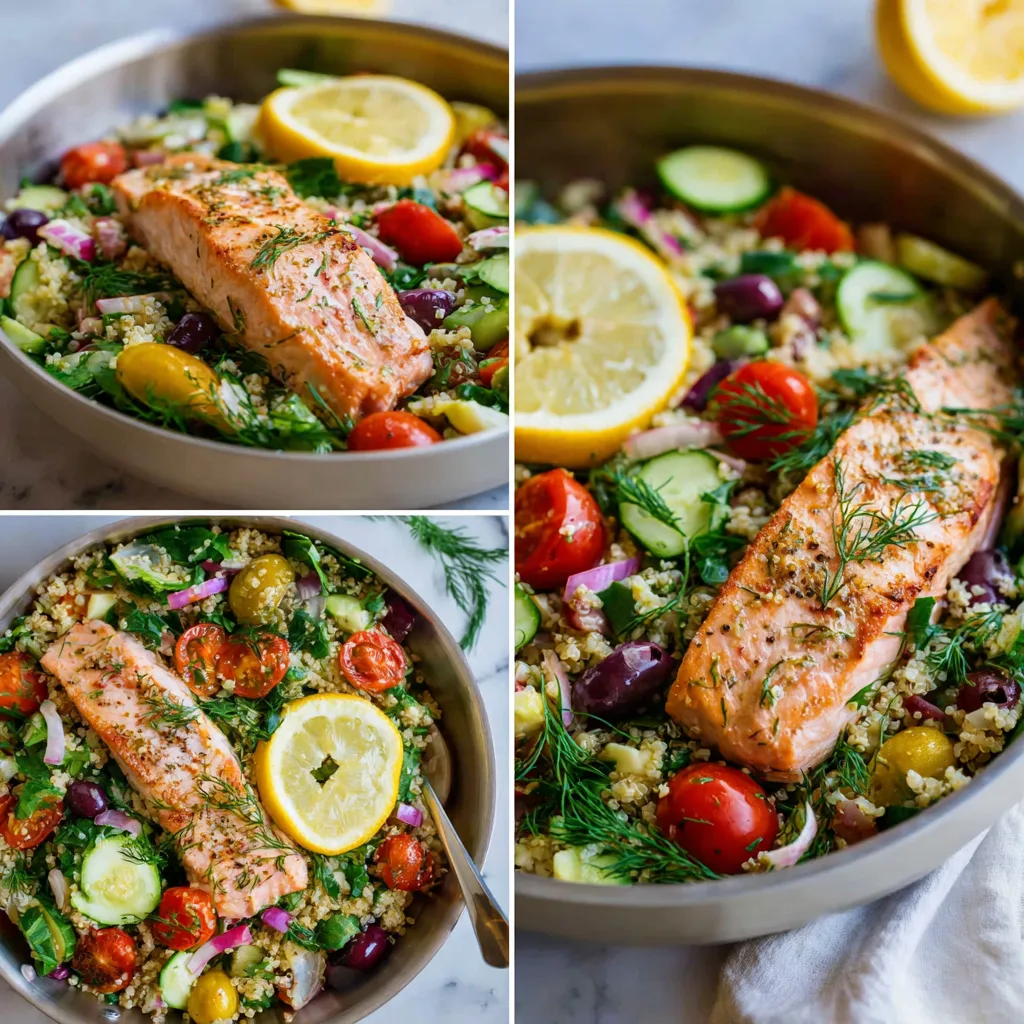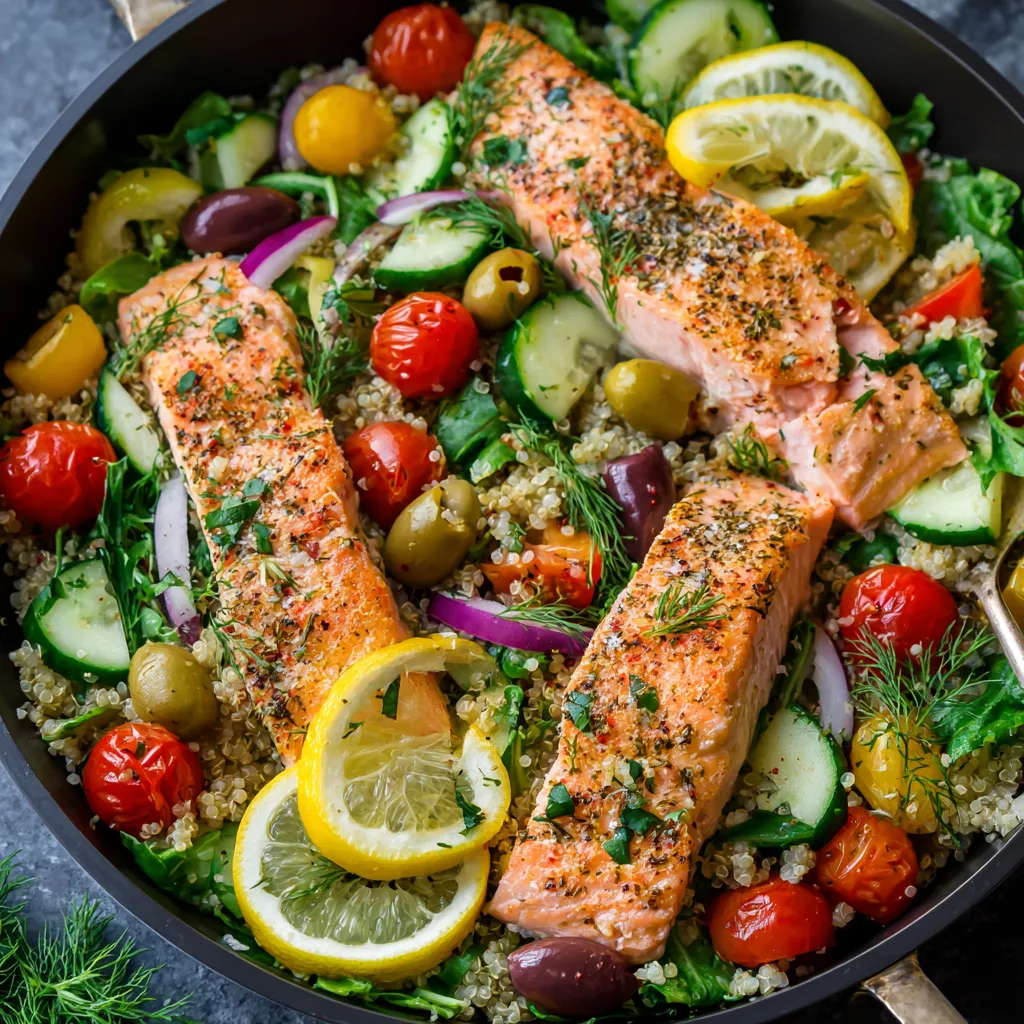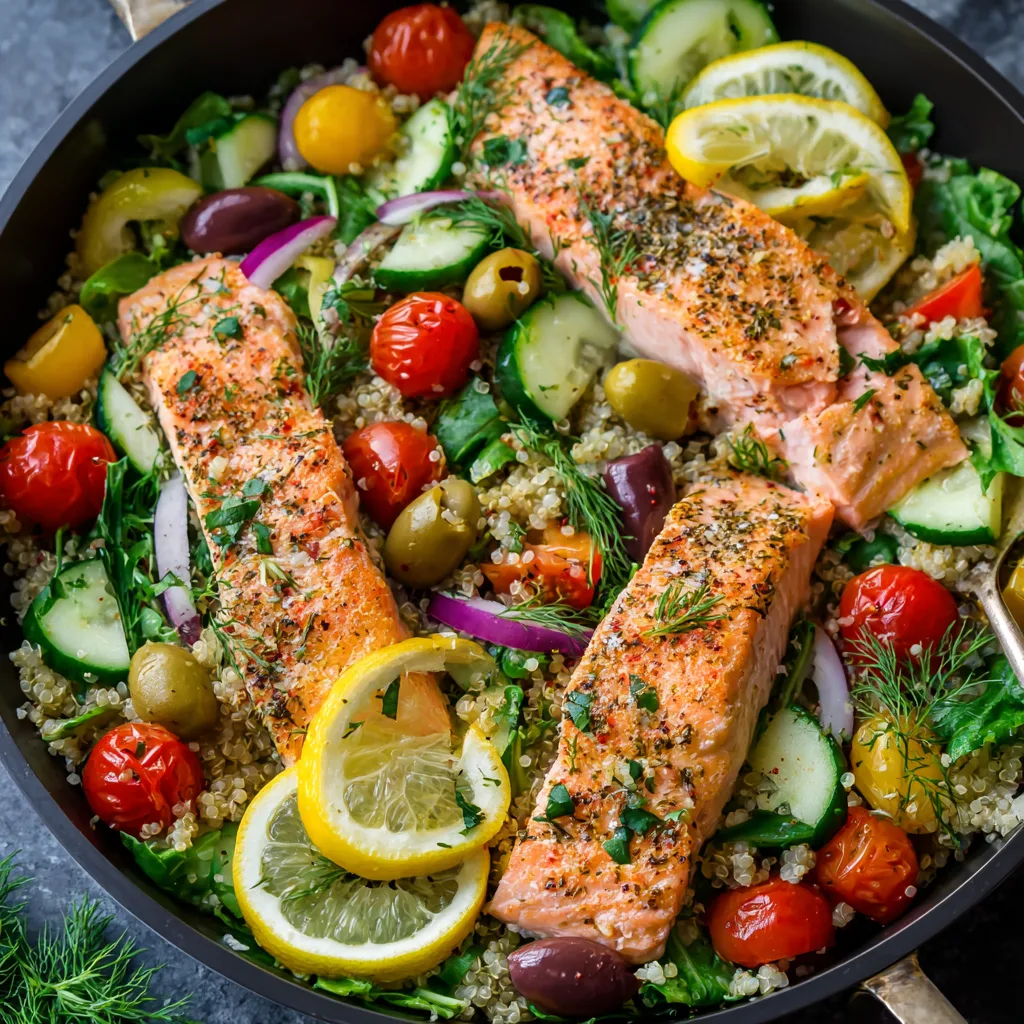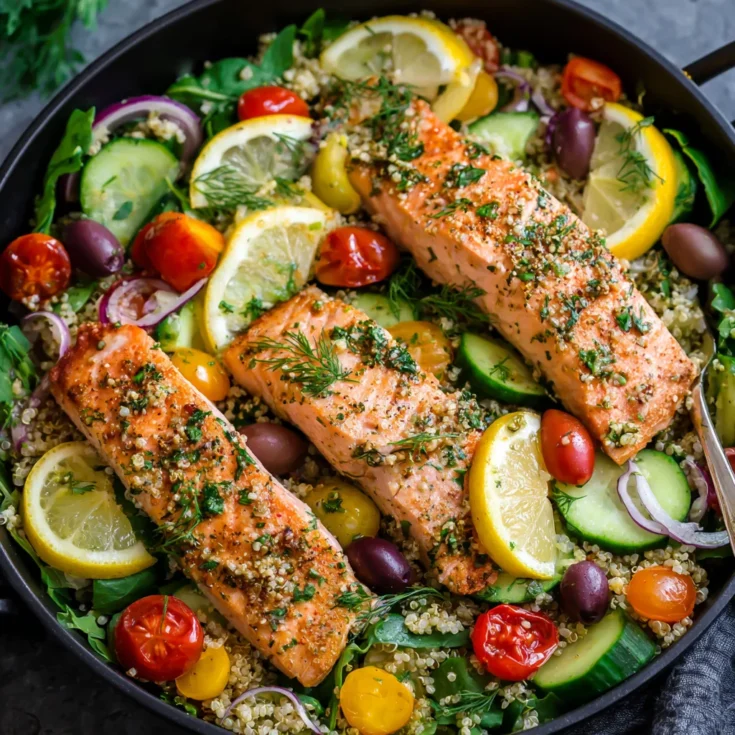Healthy One‑Pot Salmon Salad – A Quick, Nutritious Meal
Salmon is one of nature’s best sources of clean, heart-healthy protein. Rich in omega-3 fatty acids, it supports brain function, reduces inflammation, and boosts heart health. When paired with fresh vegetables and a light dressing, it transforms into a balanced, satisfying meal. What if you could create that delicious meal using just one pot? That’s where the healthy one-pot salmon salad comes in.
This dish brings together convenience and nutrition in a single bowl. “One-pot” means exactly what it says: cook the salmon, mix in your favorite grains or legumes, toss with crisp veggies and a zesty dressing—all in one dish. No pile of dirty pans. No complicated steps. Just smart, wholesome cooking.
Why choose a one-pot salmon salad? It’s perfect for busy weekdays, quick lunches, and effortless meal prep. It checks all the right boxes—lean protein, fiber-packed vegetables, and healthy fats. Plus, it’s endlessly customizable. Use canned or fresh salmon. Go light with greens or heartier with quinoa or lentils. Your bowl, your way.
This article will guide you through every step of the process. You’ll learn the benefits of salmon and how to build your salad base. You’ll explore variations to suit any diet. From choosing the best salmon to assembling your ingredients, every section offers clear, actionable tips. We’ll finish with a ready-to-use recipe card you can save or share.
If you’re searching for a meal that’s healthy, quick, and full of flavor, you’re in the right place. Let’s dive into the world of one-pot salmon salads—a delicious solution to healthy eating made easy.
Why Choose a Healthy One‑Pot Salmon Salad?
Health and Nutrition Benefits
Salmon offers a powerhouse of essential nutrients. It’s loaded with omega-3 fatty acids, high-quality protein, and a range of B vitamins that help fuel your body. These nutrients support brain function, reduce inflammation, and promote heart health. In fact, Joy Bauer’s anti-inflammatory salmon salad featured on EatingWell highlights how salmon can be the star of a healing, energizing meal.
When paired with grains like quinoa or legumes such as lentils or chickpeas, the nutrition goes even further. These additions boost fiber and plant-based protein, keeping you full longer and supporting digestive health. The combination makes for a satisfying meal without heaviness.
Eating salmon regularly may also lower the risk of chronic disease. Its anti-inflammatory benefits help manage conditions like arthritis, while the healthy fats contribute to sharper cognitive function. One-pot salmon salads are more than convenient—they’re genuinely good for your health.
Convenience and Sustainability
One-pot meals save time and reduce mess. A salmon salad made in one pot means fewer dishes to wash and more time to enjoy your meal. Whether you choose fresh, frozen, or canned salmon, the process stays simple. Canned salmon is especially handy—it’s pre-cooked, shelf-stable, and ready to use in minutes.
This dish also supports sustainability. Using up leftover cooked salmon or repurposing ingredients from previous meals cuts down on food waste. Salmon is versatile, too. Pan-seared, oven-baked, or poached—it works well in any form. With minimal effort, you get a restaurant-quality meal made right at home.
Customization & Dietary Flexibility
Healthy one-pot salmon salads can fit almost any lifestyle. They’re naturally gluten-free and easy to make dairy-free or low-carb. Want a Mediterranean twist? Add olives, cucumbers, and feta. Need an anti-inflammatory version? Stick with leafy greens, salmon, and an olive oil–based dressing.
They’re great for any time of day. Enjoy one for lunch at your desk, serve it chilled for dinner, or prep a batch for several meals. The beauty lies in its flexibility—just swap out ingredients based on what you love or what’s in your fridge.
From nutrition to ease, this salad checks every box. It’s fast, customizable, and good for your body





